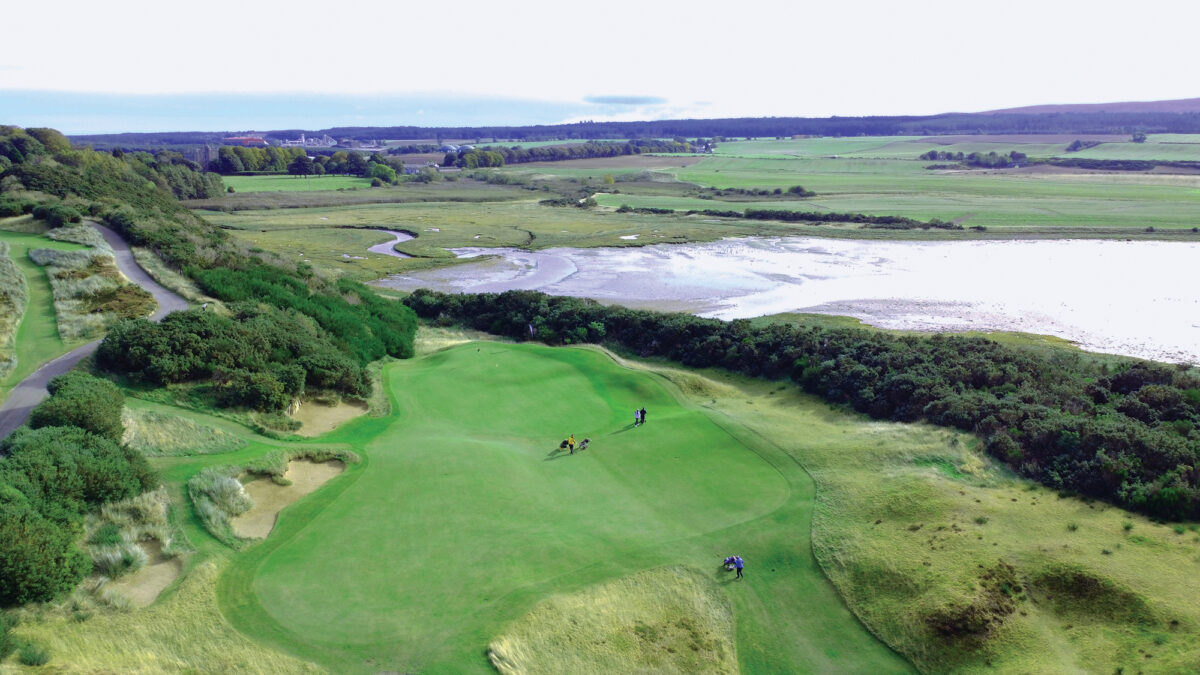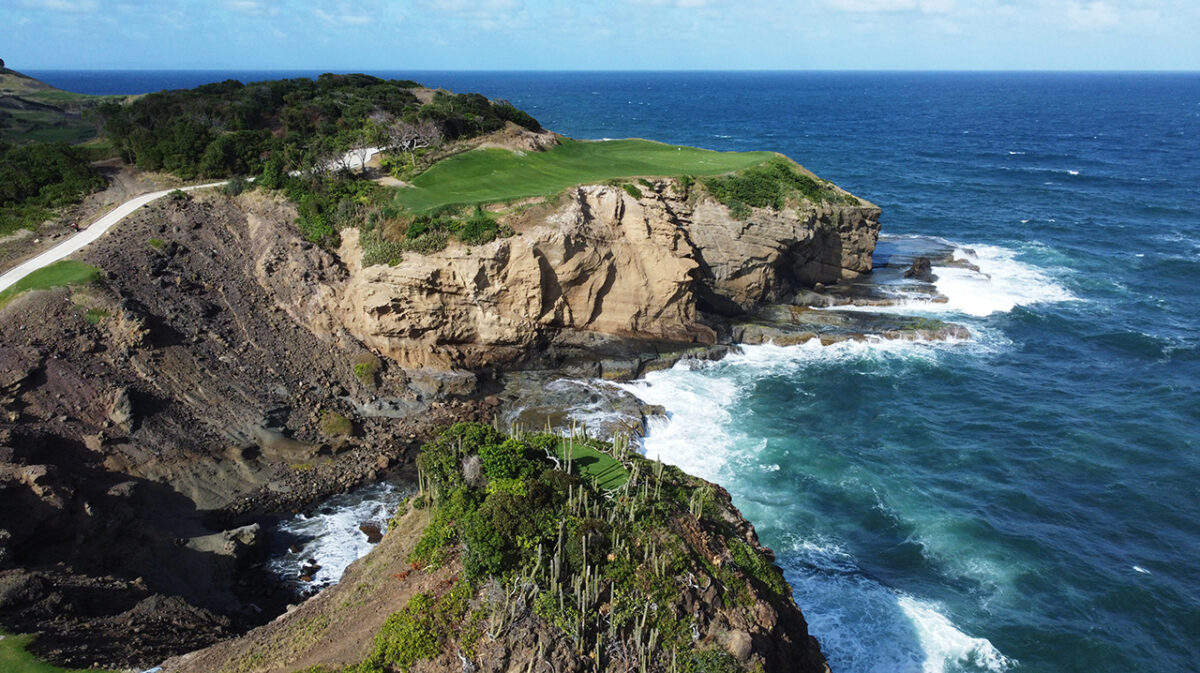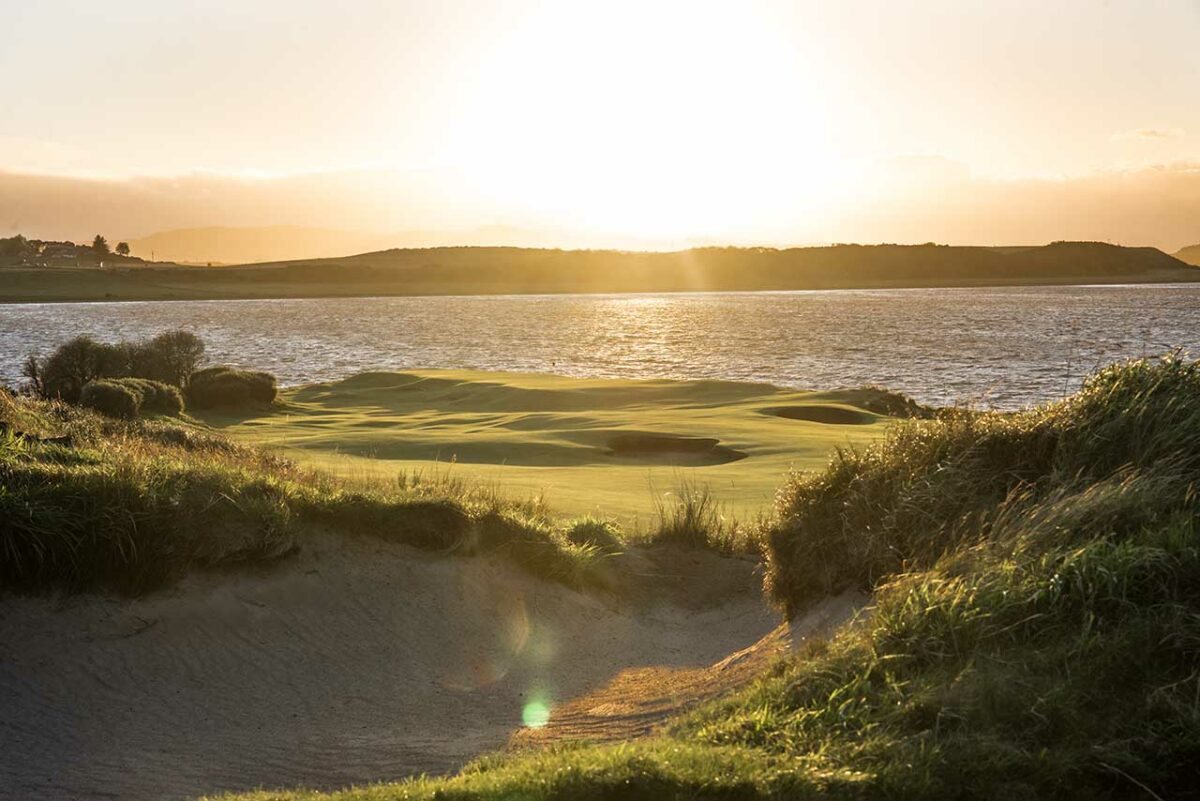[anyclip pubname=”2122″ widgetname=”0016M00002U0B1kQAF_M8171″]
A 400-year-old castle. Crisscross fairways. Stunning ocean views reaching from water’s edge to higher and farther back. A giant rolling hill. A front nine loaded with par 4s, then a more conventional back nine with two par 3s and two par 5s. Expect humps, bumps, hollows and fun bounces, all along the northern Scottish coastline not far from Inverness.
Tom Doak’s routing for the yet-to-be-named second course at Cabot Highlands was released by the resort’s Canadian-based ownership group this week. It’s a sure bet the famed American designer utilized his vast knowledge of Scottish golf design – accumulated through years of on-the-ground study of the country’s greatest natural links – to create this much-anticipated layout that should open to preview play in 2024 and fully in 2025.

There’s just one thing: The second course at Cabot Highlands won’t sit on traditional links land. Instead of a totally natural golf site, this property has been farmed for decades, much of it pressed smooth as it rolls past the castle and down that gorgeous hill toward an estuary and the Moray Firth beyond.
That means Doak and his Renaissance Golf Design team have been tasked with creating much of the shot-making drama. On a piece of land that has seen farm tractors instead of greens mowers, they must interject the fun and intricate terrain features that make up the best of Scottish golf.
Doak, of course, knew this when he accepted the job. His stated goal from the beginning: Take what the land offers, don’t overcook anything and, when in doubt, take a drive along the coast for a design refresher at some of the best links courses in the world. It might be St. Andrews to the east, or Royal Dornoch on the opposite side of the firth. Just along this little section of seaside, there’s a wide sampling of classic Scottish links courses to provide inspiration.

“The good thing about trying to do this in Scotland instead of in Florida is, if you’re ever not sure, you drive right over there (pointing out window), or drive up north, and go have a look at a few other courses,” Doak said during a tour of the land in late 2022 as he worked on the routing. “You know, I think most architects, we do too much. The things that are cool about the contouring here (in Scotland) is that it’s small scale and it’s wrinkly, but there are large expanses of fairly flat stuff in with that. It doesn’t just keep going with jittery contours forever. Even the most complex golf courses have big areas of relatively flat areas. …
“You think about it, we’re working on something now that we’re trying to bring in some links contours, so it’s almost like we’re going around and looking at things and sampling (other courses). Like, ‘We could do something like that little stretch somewhere else.’ “

A similar recipe already has proved successful at Cabot Highlands, which was known as Castle Stuart until 2022 when Cabot purchased it. The original course on the property – which is still called Castle Stuart Golf Links – was designed on similarly farmed land, and that cliffside layout by Gil Hanse and Mark Parsinen that opened in 2009 has climbed to No. 4 on Golfweek’s Best ranking of modern courses in Great Britain and Ireland. It’s a layout that’s never feels overdone, with manmade features that appear natural in their jaw-dropping setting.
Doak’s course is intended to complement that original layout and secure for the resort a spot on even more must-play lists.
The routing map shows seven par 4s on the front with an 18-hole par of 72, the layout sweeping from a high point across land formerly occupied by the driving range, down past the castle then around and over the estuary. It extends to a point that, from the clubhouse, appears to be miles away across a small bay. It’s an out-and-back routing that doesn’t return to the clubhouse until No. 18, the line of play for which crisscrosses that of No. 1 in one huge and shared fairway. For much of the journey, Moray Firth and the surrounding mountains will provide plenty of eye candy.
And Cabot isn’t stopping with the new course. The company is pumping in capital to make the entire property even more appealing, with an expansion of the clubhouse underway and new real estate opportunities.
It’s all part of a rapid expansion for Cabot, which took off with two incredible courses in Nova Scotia and now has ongoing projects with a new cliffside thriller in Saint Lucia, a major renovation in Florida and a fresh mountain layout in western Canada. Cabot Highlands was the company’s first acquisition in Scotland, and the second 18 there is the first course Doak has built for the company.
“In the historic home of golf, we looked to Tom to create something special, and perhaps unconventional by modern standards,” Ben Cowan-Dewar, CEO and co-founder of Cabot, said in the media release announcing the routing. “His vision of resurrecting an old true-links style course will serve as a great complement to the beloved (and original) Castle Stuart Golf Links. We hope to create an awe-inspiring destination anchored by incredible golf that will stand the test of time for generations to come.”









